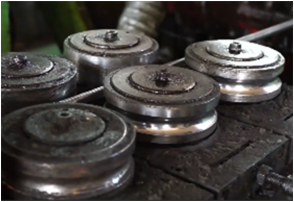12월 . 04, 2024 17:01 Back to list
m5 nut socket size
Understanding M5 Nut Socket Size A Comprehensive Guide
When it comes to mechanical engineering and assembly, fasteners play an essential role in ensuring the integrity and durability of structures and devices. Among these fasteners, nuts and bolts are ubiquitous, providing critical connections in various applications. One particularly important category of nuts is the M5 nut, which is widely used in both industrial and DIY projects. In this article, we will explore the M5 nut socket size, its specifications, and practical considerations for usage.
What is an M5 Nut?
The M in M5 denotes the metric system, referring to the International System of Units (SI). The number 5 designates the nominal diameter of the screw thread in millimeters; in this case, a 5mm diameter. Therefore, an M5 nut is a type of fastener that corresponds to an M5 bolt, forming a critical pairing in many engineering applications.
M5 nuts can be found in various forms, such as hex nuts, lock nuts, and wing nuts, each serving a specific purpose based on the application. They are manufactured from different materials including stainless steel, brass, and nylon, allowing for versatility in both mechanical and aesthetic considerations.
M5 Nut Socket Size
When discussing tools used to tighten or loosen M5 nuts, the socket size becomes critical. The standard socket size for an M5 nut is typically 8mm. This means that an 8mm socket wrench or ratchet is required to effectively grip and turn the M5 nut. It is vital to use the correct socket size to avoid stripping the nut or damaging the tool.
However, simply knowing the socket size is not enough. It is also essential to understand the differences in socket types. There are standard sockets, deep sockets, and impact sockets, each with unique attributes.
1. Standard Sockets These are used for most general applications where depth is not an issue. They effectively fit over the M5 nut, allowing for quick tightening or loosening.
m5 nut socket size

2. Deep Sockets If there are obstructions preventing access to the nut or if the bolt extends too far past the nut, a deep socket provides the necessary length to reach and turn the nut.
3. Impact Sockets Designed to withstand higher torque, impact sockets are crucial when working with power tools. They are made from sturdier materials and can handle the additional stress without breaking or deforming.
Considerations When Using M5 Nuts and Sockets
1. Tightening Torque It is vital to apply the correct amount of torque when tightening M5 nuts. Over-tightening can lead to damage while under-tightening might result in a weak connection. Refer to manufacturer specifications or engineering guidelines for the appropriate torque settings.
2. Material Compatibility Ensure that the nut, bolt, and socket material compatibility are considered. For instance, using a stainless steel nut with a low-quality steel bolt could lead to galling, where the two metals fuse together, potentially damaging both parts.
3. Thread Locking Depending on the use case, it might be beneficial to apply a thread-locking adhesive on the M5 bolt before fastening the nut. This can prevent the nut from loosening due to vibrations or dynamic loads.
Conclusion
In summary, understanding the M5 nut socket size is crucial for anyone engaged in engineering or DIY projects. The standard socket size for M5 nuts is 8mm, and knowing the types of sockets available enhances your ability to work efficiently. Proper technique, material compatibility, and adherence to torque standards will ensure a secure connection, which is the backbone of any structure or mechanical assembly. Armed with this knowledge, you can confidently tackle projects involving M5 nuts and bolts, ensuring strong and reliable outcomes.
-
The Ubiquitous Reach of DIN934 in Application Realms
NewsMay.16,2025
-
Exploring Different Bolt Types
NewsMay.16,2025
-
Cracking the Code of Sleeve Anchor Mastery
NewsMay.16,2025
-
Clamp Design Principles,Types and Innovations
NewsMay.16,2025
-
Artistry Inspired by the Humble Anchor Bolt
NewsMay.16,2025
-
A Deep Dive into Screw Types
NewsMay.16,2025


